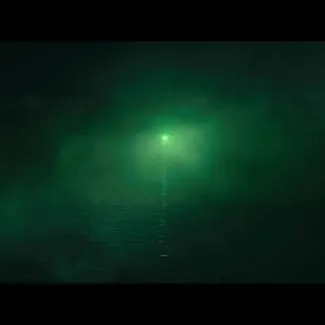
Why Words are colour
Ogilvy UK's Jules Chalkley on how the power of colour helps tell stories
19 April 2024
Words simply typed on to a page are actually quite boring to look at. 99 per cent of the time it’s black on white. Maybe a serif. Maybe not. With a cold eye and putting meaning to one side, they’re pretty binary. Unless, of course, you have a world-class designer or typographer. But mostly, visually boring as fuck.
Colour though, even in its purest form, makes a statement. Just look at a rainbow – the visible spectrum laid bare.
Surprisingly, it’s interesting to know that there are a poxy 170,000 words in common usage of the current English language, with only a few languages having more words.
On the other hand, it is believed that the human eye can register approximately 10 million distinguishable colours. Two-nil to Team Colour then.
Colour in the Mind
Humans trump most life forms in their ability to see and interpret colour because we have three colour receptors, most living creatures have two. It’s easy going into a head spin when you think that the eyeball has cells that are entirely and perfectly transparent, devoid of blemish or flaw. But what is truly jaw-dropping is that at the back of those cells is the most powerful object in the entire known universe; the imaginative mind.
And that’s where those 170,000-odd words truly find an unbeatable power. Because there is colour in the eye. And colour in the mind.
Film makers use colour theory to weave their narrative power. Wes Anderson is the master of it, using happy colours for serious matters and blues and cool colours for joy. It’s the DNA of Anderson’s discordant and very quirky style.
But writers have perhaps a keener and sharper understanding of how colour can tell a story.
In The Great Gatsby, the standout symbol is the green light on Daisy’s East Egg dock that Gatsby eyes from across the water. Fitzgerald uses green, the colour of jealousy and greed, to symbolise Gatsby’s obsession with wealth and his desire for a married woman. (Sidenote: Shakespeare could actually be the source of green being associated with jealousy, calling it a “green-eyed monster”.)
In Margaret Atwood’s dystopian novel, the Handmaids wear red robes and white wings, symbolic of fertility and subservience to the ruling class. Red also represents the bloodshed and violence of the regime that oppresses them.
Even white has a powerful role. In Moby Dick, Ishmael explicitly points out; 'It was the whiteness of the whale that above all things appalled me.' Through using white, the whale represents something that is beautiful and virtuous, a representation of wisdom and nobility. But dramatic tension in the story lies with the contrast to whiteness' connections to nobility. Ishmael makes his point that the deadly polar bears and great white sharks are both dangerous creatures that hide behind a veil of whiteness. It is the exact whiteness of the whale that is a form of trickery that prevents the hunters from understanding what they are truly up against.
In the visible real world, a red flower is a red flower. Your red is my red. Your yellow is my yellow. But through books and the individual imagination, every dimension changes. The whales you see or the oppression you sense are uniquely manifest. They are beautiful, rich and emotionally powerful – they are yours. That’s because the great storytellers know that words, when used correctly, are more colourful and more powerful than colour itself.
Unless of course, you have the eyes of the Mantis Shrimp. They have 12 different types of colour receptors which leads to a richer colour gamut allowing them a colour range unimaginable by humans.
But even then, these ‘Peak Prawns’ have one small problem; they probably haven’t read anything by Dylan Thomas.
Jules Chalkley is chief executive creative director at Ogilvy UK




